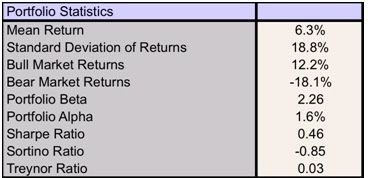ESG IPS OMG!!
The Investment Policy Statement (IPS) is now complete! Once again, this was a very enlightening and helpful “self-exercise”. It was not only important to hone the practice of constructing IPS documents for future clients, but this process also forced me to think about refining the structure of our portfolio.
The first challenge was ESG investment portfolio migration, meaning what are the thresholds and timing to reach our ESG investment goals. As I mentioned in a previous post; investment options for retail investors in the ESG space have improved significantly over the years however, there are still limitations. Here are the portfolio ESG attainment goals out to 2020:
- 2016: 10%
- 2017: 20%
- 2018: 30%
- 2019: 50%
- 2020: 75%
This means for example, in 2016 at least 10% of our portfolio will be invested in what is considered to be ESG qualified assets. I have not done the analysis to see where we stand now, so I may be undershooting the first goal however, I would assume it does not exceed 5%. By 2020, I hope to have numerous traditional and alternative asset, ESG qualified product to choose from. After 2020, the optimal goal would be closer to 100%.
The underlying framework of the portfolio is built from the suggested portfolio composition constructed and suggested by Allianz’s Chief Economic Advisor, Mohamed El-Erian in his book, “When Markets Collide”. As many of you may know, his suggested portfolio is as follows:
- 15% U.S. Equities
- 15% Foreign Developed Equities
- 12% Emerging Market Equities
- 9% U.S. Bonds
- 15% Foreign Bonds
- 5% Real Estate
- 11% Commodities
- 5% TIPS
- 5% Infrastructure
- 4% Special Opportunities
- 4% Private Equity
I made some changes to the portfolio composition to allow for some Cash and Hedge positions. Now the portfolio will look like this:
- 15% U.S. Equities
- 15% Foreign Developed Equities
- 12% Emerging Market Equities
- 2% Cash
- 6% U.S. Bonds
- 9% Foreign Bonds
- 6% Real Estate
- 11% Commodities
- 5% TIPS
- 5% Infrastructure
- 4% Special Opportunities
- 2% Hedges
- 7% Private Equity
While there are plenty of index options to choose from, I selected what I perceive as the industry leaders, heavily relying on Vanguard and BlackRock (iShares) to construct the base portfolio:
- Savings and Cash
- iShares TIPS Bond
- Vanguard Total Bond Market
- Vanguard Mid-Cap Index Fund
- Vanguard Small -Cap Index
- Vanguard Large-Cap Index
- iShares Core MSCI EAFE ETF
- iShares Emerging Market Fund
- iShares S&P Emerging Markets Infrastructure*
- iShares Global Infrastructure #
- iShares MSCI Frontier Markets**
- iShares International Developed Real Estate
- iShares Global High Yield Corporate Bond+
- iShares International Treasury Bond+
- iShares Dow Jones Real Estate
- iShares Emerging Markets High Yield Bond ETF+
- iShares Emerging Markets Corporate Bond ETF
- iShares S&P GSCI Commodity-Indexed Trust
- ProShares Short S&P 500
- ProShares Short MSCI EAFE
- ProShares Short Emerging Markets!!
- PowerSharesGlobal Listed Private Equity Portfolio!
- IQ Hedge Multi-Strategy Tracker ETF$
I then back-tested the portfolio using data from 2004 – 2014. Here are the findings:

So what does this mean? Well, my objective is for my ESG themed portfolio to beat or at least meet the performance of this El-Erian, Peterson adjusted standard portfolio.
The next objective was to implement constraints on characteristics of the portfolio.
- No single non-ESG investment holding shall appear in the Top 20 of the overall Total Asset portfolio
- The Oil and Gas industry shall not appear as a Top 20 exposure of the overall Total Asset portfolio
No country exposure shall occupy the Top 20 that is in violation of the following United Nations (UN) international covenants and/or standards - International Covenant on Civil and Political Rights
- International Covenant on Economic, Social and Cultural Rights
- UNEP Finance Initiative/UN Principals for Responsible Investment
The challenge with the constraints, specifically the state-centric constraints, will be to quantify them. Instead of using a binary approach, I will look to use a more quantitative, top-down approach to determine the investable universe of assets and which states that I can invest in and those that I should avoid.